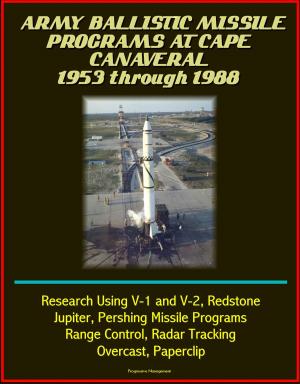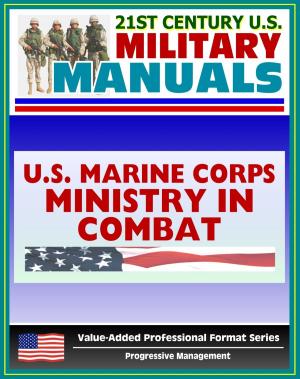Reading the Tea Leaves: Proto-Insurgency in Honduras - How to Recognize An Insurgency While In Early Stages, Interagency Friction, Intelligence Assessments, Nature of the Conflict, General John Galvin
Nonfiction, History, Military, United States, Social & Cultural Studies, Political Science| Author: | Progressive Management | ISBN: | 9781310475566 |
| Publisher: | Progressive Management | Publication: | May 15, 2016 |
| Imprint: | Smashwords Edition | Language: | English |
| Author: | Progressive Management |
| ISBN: | 9781310475566 |
| Publisher: | Progressive Management |
| Publication: | May 15, 2016 |
| Imprint: | Smashwords Edition |
| Language: | English |
Professionally converted for accurate flowing-text e-book format reproduction, this unique case study examines ways of recognizing an insurgency while it is still in its early stages. This case looks at the strategic and operational effects of interagency friction, intelligence assessments, and how to recognize the nature of the conflict. It includes a framework for analyzing insurgencies at their earliest stages; it also provides a set of benchmarks that have helped operators to better understand their environment. The framework is not meant to be conclusive; rather, it is a set of questions to help current operators consider when and whether an organized rebellion is forming. The case also raises the issue of what other indicators we should be aware of in a 21st century, social media world.
List of Acronyms and Terms * Chapter I * Introduction * Chapter II * Phase One and Two Insurgencies * Chapter III * Background * Chapter IV * The Checklist * A. Discussion * Chapter V * Messages and Reports (M&R) * A. M&R 1-6: July 1982 to July 1984 * B. Reaction * C. M&R 7 March-30 November 1986 * D. The End of the Case, the End of an Era * Chapter VI * Annexes * Annex A: Analyzing Insurgency * Annex B: Memorandum of Phone Conversation with General John Galvin (U.S. Army, Ret.) * Annex C: Recollection * Annex D: Reflections on Contributing Factors * Annex E: Early Special Operations Force - What Came Before * Chapter VII * Bibliography
Students conducting research on Honduras and Latin America will probably find the extensive bibliography at the end of the case helpful. Compiled by the case study author and by CIWAG researchers at the Naval War College, the bibliography is a selection of the best books and articles on a range of related topics.
Professionally converted for accurate flowing-text e-book format reproduction, this unique case study examines ways of recognizing an insurgency while it is still in its early stages. This case looks at the strategic and operational effects of interagency friction, intelligence assessments, and how to recognize the nature of the conflict. It includes a framework for analyzing insurgencies at their earliest stages; it also provides a set of benchmarks that have helped operators to better understand their environment. The framework is not meant to be conclusive; rather, it is a set of questions to help current operators consider when and whether an organized rebellion is forming. The case also raises the issue of what other indicators we should be aware of in a 21st century, social media world.
List of Acronyms and Terms * Chapter I * Introduction * Chapter II * Phase One and Two Insurgencies * Chapter III * Background * Chapter IV * The Checklist * A. Discussion * Chapter V * Messages and Reports (M&R) * A. M&R 1-6: July 1982 to July 1984 * B. Reaction * C. M&R 7 March-30 November 1986 * D. The End of the Case, the End of an Era * Chapter VI * Annexes * Annex A: Analyzing Insurgency * Annex B: Memorandum of Phone Conversation with General John Galvin (U.S. Army, Ret.) * Annex C: Recollection * Annex D: Reflections on Contributing Factors * Annex E: Early Special Operations Force - What Came Before * Chapter VII * Bibliography
Students conducting research on Honduras and Latin America will probably find the extensive bibliography at the end of the case helpful. Compiled by the case study author and by CIWAG researchers at the Naval War College, the bibliography is a selection of the best books and articles on a range of related topics.















